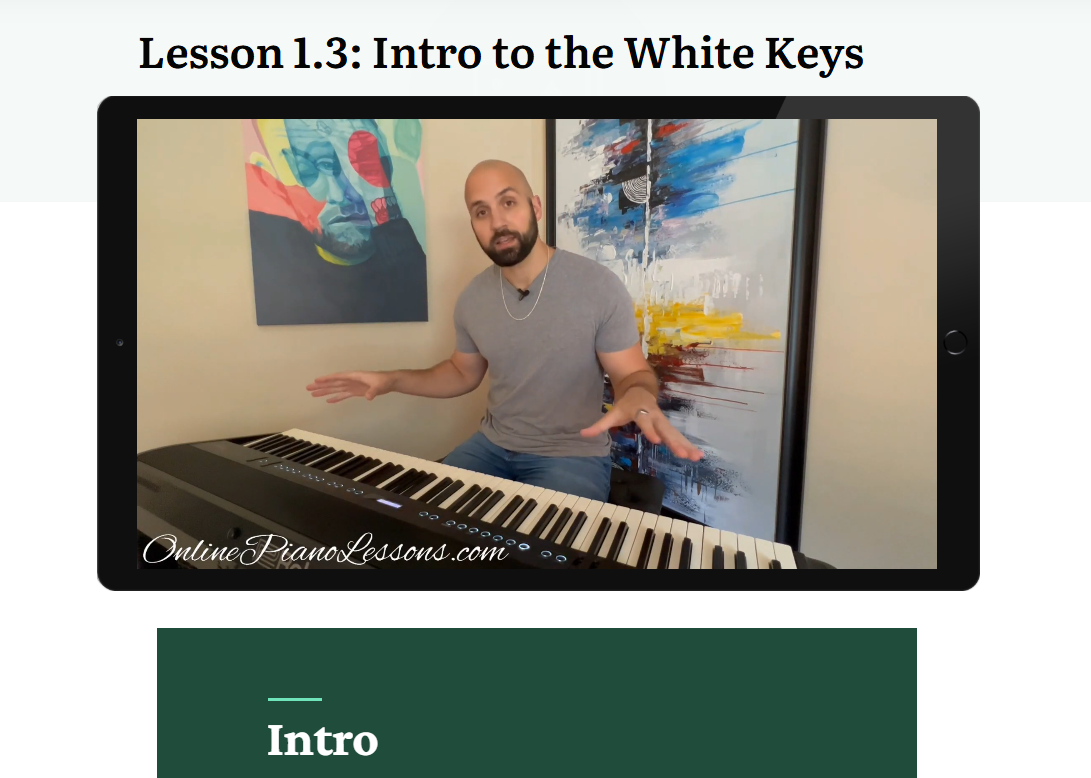If you’ve ever wondered how many beats does a quarter note get, you’re asking one of the most useful rhythm questions a musician can ask. The short answer is: it depends — on the time signature and how the composer wants the beat to be felt. In this guide I’ll explain what a quarter note is, how the time signature determines the beat, give clear examples (with counting and metronome markings), and show practical ways pianists can internalize these ideas. By the end you’ll confidently answer the question “how many beats does a quarter note get” in any piece you read.
What Is A Quarter Note?
A quarter note is a common rhythmic unit in Western music notation. Visually it’s a filled-in note head with a stem. As an absolute value, a quarter note equals two eighth notes, one half of a half note, and one fourth of a whole note. But when students ask how many beats does a quarter note get, they’re usually asking about the beat unit — what value the time signature assigns as “one beat.”
So while a quarter note has a fixed proportional length relative to other notes, how many beats a quarter note gets depends on the context of the time signature and the conductor’s or composer’s choice of beat division.
How The Time Signature Answers “How Many Beats Does A Quarter Note Get”
Time signatures are the key. A time signature has two numbers: the top number tells you how many of a given note occur in a measure, and the bottom number tells you which note value equals one beat. The bottom number is the crucial piece when answering how many beats does a quarter note get.
- If the bottom number is 4 (e.g., 4/4, 3/4, 2/4), the quarter note is the beat unit. In those signatures, a quarter note gets one beat.
- If the bottom number is 2 (e.g., 2/2, also called cut time), the half note is the beat unit — so a quarter note gets half a beat. In other words, two quarter notes equal one beat.
- If the bottom number is 8 (e.g., 6/8, 9/8, 12/8), the eighth note is the written subdivision. In many compound meters (6/8, 9/8, 12/8), the beat is grouped as dotted-quarter notes, so a quarter note does not align with the main beat; a quarter note in 6/8 equals two eighth notes (so it’s 2/3 of the dotted-quarter beat). That can feel awkward at first, but it’s just arithmetic: the quarter note is always two eighth-note values, but whether those two eighths equal the main beat depends on how the meter groups them.
So when you ask how many beats does a quarter note get, get into the habit of checking the bottom number of the time signature and thinking about whether the meter is simple (beats as single note values like quarter notes) or compound (beats as dotted values).
Concrete Examples: Time Signatures and Quarter Note Behavior
4/4 (Common Time)
Time signature: 4/4 — top 4 means four beats per measure; bottom 4 means quarter note = 1 beat.
Answer to how many beats does a quarter note get? → One beat.
Counting: 1 2 3 4 (each count = one quarter note). Metronome: “quarter = 90” means 90 quarter-note beats per minute.
3/4 (Waltz Time)
Time signature: 3/4 — three beats per measure; bottom 4 means quarter note = 1 beat.
Answer: One beat. Count: 1 2 3.
2/2 (Cut Time)
Time signature: 2/2 — two beats per measure, bottom 2 means half note = 1 beat.
Answer: A quarter note gets half a beat (so two quarter notes = one beat).
Counting: feel “1 — 2 —” where each dash is a quarter note. Metronome marking might say “half = 84” meaning two quarter notes happen per beat.
6/8 (Compound Duple)
Time signature: 6/8 — six eighth notes per measure. In practice the beat is usually a dotted-quarter.
Answer: A quarter note is 2 eighths; the main beat is a dotted quarter (3 eighths). So how many beats does a quarter note get? → It gets 2/3 of a beat if the beat is the dotted-quarter. You can still count eighths (1 & 2 & 3 & 4 & 5 & 6 &), but it’s often easier to feel it as “1 (la li) 2 (la li)” where each parenthetical is the subdivision of a dotted quarter.
12/8
Time signature: 12/8 — twelve eighth notes grouped as four dotted-quarter beats.
Answer: Quarter note = 2 eighths = half the dotted-quarter beat. So how many beats does a quarter note get? → Not a full beat in this meter; it’s two-thirds of a dotted-quarter beat.
Using Metronome Markings To Interpret Quarter Note Value
Metronome markings (e.g., ♩ = 120) show which note value equals one beat and the tempo. The symbol ♩ (a quarter note) means the quarter note equals the marked BPM. If a score shows ♪ = 60 (eighth note) or dotted-quarter = 104, those symbols tell you which unit the composer wants you to feel as the primary beat. So if your score has dotted-quarter = 80 in 6/8, then you should feel the dotted-quarter as the pulse — and answer the question how many beats does a quarter note get accordingly (it gets two eighth-note values, which is not the beat here).
Always read the tempo marking and the time signature together to know what the beat really is.
Practical Piano Examples And Counting Strategies
- In 4/4 pieces: practice saying “1–2–3–4” and play one quarter-note chord per count. This reinforces that a quarter note gets one beat.
- In 2/2 pieces: practice saying “1-and 2-and” where the numbers are the half-note beats; each “and” is the quarter-note subdivision (so a quarter note gets half a beat).
- In 6/8 pieces: practice feeling “ONE two three FOUR five six” or “ONE (la li) TWO (la li)”; feel two main beats (dotted-quarter) and subdivide into three eighths. Remember that in compound meters the quarter note falls between beats.
A useful exercise: take a short melody and tap the quarter note on a metronome set to the beat. Then change the metronome to a half-note or dotted-quarter feel and observe how the role of the quarter note shifts. Ask yourself repeatedly: how many beats does a quarter note get in this new context? This kind of practice builds rhythmic intuition.
Common Confusions And Quick Clarifications
- The quarter note’s absolute duration relative to other notes never changes (it’s always two eighth notes), but the perceived beat unit can change with the time signature. That’s why the answer to how many beats does a quarter note get can be “one beat,” “half a beat,” or “not a full beat” depending on context.
- In simple meters (bottom number 4 or 2), the quarter note’s relationship to the beat is straightforward: quarter = beat in /4 meters; quarter = subdivision in /2 meters.
- In compound meters (bottom number 8), the quarter note is usually a subdivision, not the main beat.
Practice Tips For Pianists
- Always check the time signature first when asking how many beats does a quarter note get.
- Clap the beat and count out loud using the appropriate beat unit (quarter, half, or dotted-quarter) before playing.
- Use a metronome and try different beat units (set metronome to quarter = X, then to half = X) to hear the difference.
- Subdivide constantly — counting “1 & 2 &” or “1 la li 2 la li” keeps internal time reliable.
- Transcribe: rewrite a small passage in another time signature (e.g., turn 4/4 into 2/2) and notice that while the quarter note still equals two eighths, its role as a beat changes.
FAQ
In 4/4, how many beats does a quarter note get?
One beat. In 4/4 the quarter note is the beat unit.
In 2/2 (cut time), how many beats does a quarter note get?
Half a beat. The half note equals one beat, so each quarter note equals half of that beat.
In 6/8, how many beats does a quarter note get?
A quarter note equals two eighth notes; the beat is usually a dotted-quarter (three eighths). So a quarter note is two-thirds of the beat — it’s not a full beat in the usual feel.
If a metronome marking says ♩ = 90, what does that tell me about how many beats a quarter note gets?
It means the quarter note equals the beat and there are 90 quarter-note beats per minute.
Is the quarter note always one beat?
No. Whether a quarter note is one beat depends on the time signature and how the composer defines the beat unit.





 Hi, I'm Thomas, Pianist Composer,
Hi, I'm Thomas, Pianist Composer,  I love playing piano, creating new melodies and songs, and further developing my online piano course and making updates/additions to my site OnlinePianoLessons.com!
I love playing piano, creating new melodies and songs, and further developing my online piano course and making updates/additions to my site OnlinePianoLessons.com!  Now that is what I call fun!
Now that is what I call fun!





